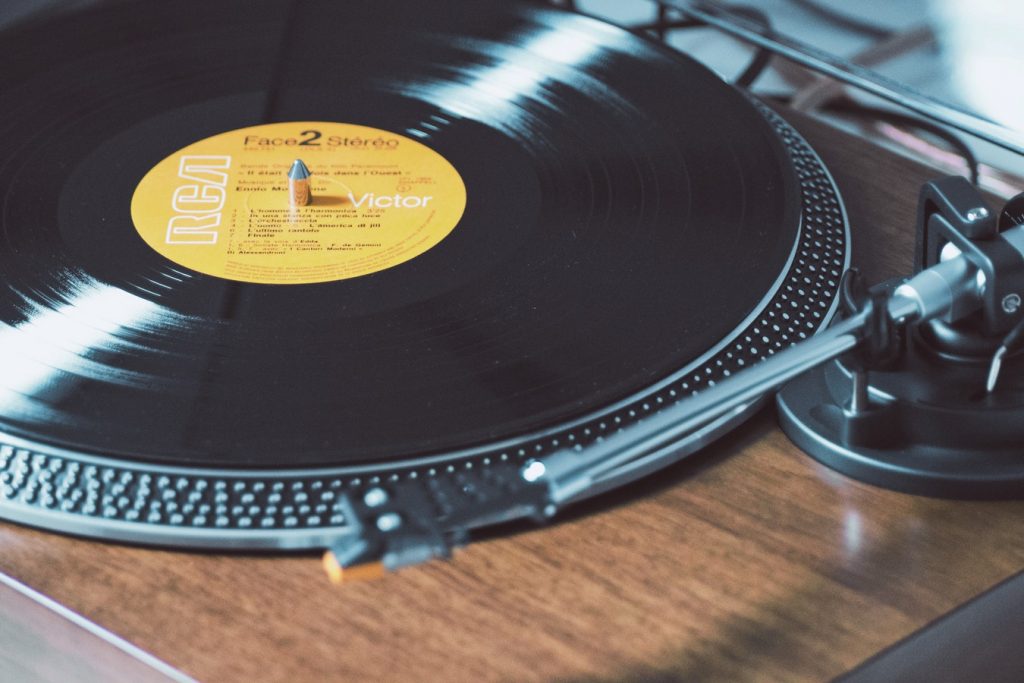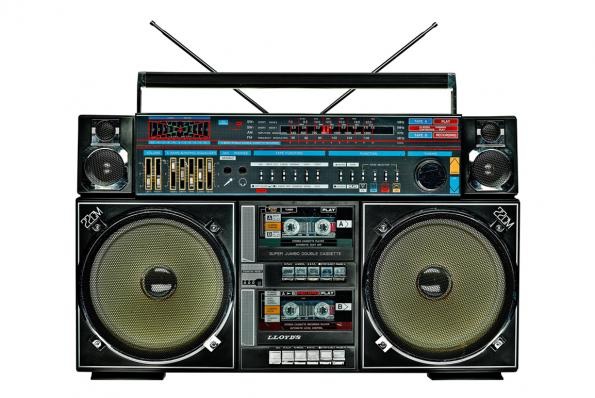Music Devices
Tyler, the Creator: The Genius Behind the Music

Introduction
Tyler, the Creator is a rapper, singer, songwriter, record producer, and music video director. He is one of the most influential and innovative musicians in the music industry today. With his unique style and sound, Tyler has made a name for himself in the rap and hip-hop world and has inspired countless artists. In this article, we will explore the life and career of Tyler, the Creator, and how he has become one of the most talked about musicians in the world.
Early Life and Career
Born on March 6, 1991, in California, Tyler, the Creator grew up in a musical family. He was fascinated with music at a young age and began creating beats and writing lyrics when he was just seven years old. He started posting his music on various online platforms, and it was not long before he gained a following.
In 2009, Tyler formed the alternative hip-hop collective Odd Future with a group of his friends. The group quickly gained popularity, and Tyler released his first mixtape “Bastard” in 2009, which received critical acclaim. The mixtape was followed by “Goblin” in 2011, which was a commercial success and helped establish Tyler as a solo artist.
Style and Sound
Tyler’s music is known for its unique style and sound. He incorporates elements of hip-hop, punk, and alternative rock into his music and is not afraid to experiment with different genres. He is also known for his use of humor in his music, which has made him a popular figure in the rap and hip-hop world. Tyler’s lyrics often touch on controversial subjects and have sparked debates and discussions about race, sexuality, and mental health.
Albums and Accomplishments
Over the years, Tyler has released several critically acclaimed albums, including “Goblin,” “Wolf,” and “Cherry Bomb.” He has also won several awards and nominations, including a Grammy nomination for Best Rap Album for “Igor.” In addition to his music career, Tyler has also made a name for himself as a music video director and has directed several of his own music videos, as well as videos for other artists.
Controversies and Criticisms
Despite his success, Tyler’s music and lyrics have been the subject of controversy and criticism. He has been accused of promoting hate speech, misogyny, and violence in his lyrics, which has sparked debates about freedom of speech and censorship in the music industry. Tyler has responded to these criticisms by saying that his lyrics are meant to be taken as satire and that he is not promoting hate speech.
Conclusion
In conclusion, Tyler, the Creator is a talented and innovative musician who has made a significant impact on the music industry. He has been praised for his unique style and sound and has inspired countless artists. Despite the controversies and criticisms, Tyler continues to make music that pushes boundaries and sparks discussions. He is a true musical genius, and his legacy will continue to live on for many years to come.
Music
Understanding the Charm of “Twinkle Twinkle Little Star”

Twinkle Twinkle Little Star undoubtedly one of the most well-known lullabies in the world, “TwinkleTwinkle Littl Star” has been lulling generations of listeners and capturing their hearts.
History of the Lullaby
Undoubtedly one of the most well-known lullabies in the world, “Twinkle Twinkle Little Star” has been lulling generations of listeners and capturing their hearts. This beautiful tune has reached across time and cultural .aEarly 19th-century French song “Ah! vous dirai-je, maman” by Mozart is where “Twinkle got its start. It’s a song that’s been around since then. This well-known song’s evolution into the beloved lullaby we appreciate today illustrates a complex history that has changed according to different cultural influences and musical modifications.
Exploring the Melody: Musical Notations of “Twinkle Twinkle Littl Star”
Popular Variations and Interpretations of the Song
Many musicians and artists have contributed their artistic vision to “Twinkle Twinkle LittleStar” throughout the years. These modifications have enhanced the song’s adaptability and its capacity to connect with listeners of various musical tastes..
Influence on Pop Culture and Children’s Education
“Twinkle Twinkle Little Star” has become more than just a lullaby thanks to its appearances in a variety of children’s books, television shows. Its involvement in early childhood education exemplifies how important it is for promoting young brains’ cognitive and creative growth.
Analyzing the Timeless Appeal of “Twinkle Twinkle Little Star”
The song “Twinkle Twinkle” LittleStar” has a timeless allure because to its entrancing melody, restful rhythm, and cozy lyrics that arouse feelings of warmth and nostalgia. Its capacity to stir feelings and instill tranquillity has cemented its reputation among people all across the world.
Learning and Playing “Twinkle Twinkle Little Star” on Different Instruments
“Twinkle Twinkle Little Star” serves as an introductory piece for people learning to play a variety of musical instruments, including pianos, flutes, guitars, and ukuleles. Its simple structure and recognized tune make it an essential component of music instruction, igniting a love of music in students of all ages.
Importance of “Twinkle Twinkle Little Star” in Early Childhood Development
Early exposure to music, particularly through charming tunes like “Twinkle Twinkle Little Star,” is essential for enhancing cognitive development and promoting emotional well-being in young children. The lullaby’s calming tones and rhythmic pattern help young toddlers develop their memory, linguistic skills, and ability to communicate their emotions.
Appreciating the Global Reach and Adaptation of the Song
“Twinkle Twinkle LittleStar” has a worldwide appeal that has allowed it to cross national boundaries and linguistic barriers and win over the hearts of people from all walks of life. Its flexibility to be adapted to many linguistic and musical genres emphasizes its cross-cultural relevance .
Conclusion
With its enduring tune and sweet lyrics, ” has continued to amaze generations, serving happiness, and musical initiation for both kids and adults. Its capacity to cross boundaries significance as a treasured component of the world’s musical history.
Frequently Asked Questions About “TwinkleTwinkle’ Little Star”
-
Q1.Is “TwinkleTwinkleLittle Star” a traditional nursery rhyme?
” It is true that the nursery rhyme “TwinkleTwinkle Little Star” has a long history that dates back to the 18th century.
- Q2.Who composed the melody of “TwinkleTwinkle Star”?
- Wolfgang Amadeus Mozart, a well-known composer, is credited with creating the tune for “Twinkle Twinkle LittleStar.”
- Q3.What makes “TwinklTwinkle Little Star” an ideal choice for beginners in music?
- It is the perfect place to start for anyone learning to musical instruments because to its straightfor repeated pattern familiarity.
- Q4.How has “TwinkleTwinkle Little Star” influenced popular culture?
- A cultural staple, the lullaby has been used into a variety of media, including children’s novels, television shows,educational program.
- Q5.Why is exposure to music like “TwinkleTwinkle LittleStar” crucial in early childhood development?
- Young children’s , linguistic, and emotional development are aided by music, particularly well-known and calming tunes like Twinkl Twinkle Little Star.”
Music Devices
Old Music Devices

Nowadays, we have smartphones with music applications and software that allow us to listen to music anytime, anywhere. We also have several music devices specialized for music such MP3 player, Ipod…With those technologies, everything seems so easy and convenient. However, have you ever wonder how our seniors listen to their music before any things like phones and music players are born? You will be wow when you get to know those cool old music devices.
Victrola
Victrola is a phonograph which is invented in 1877 with ability of mechanical recording and reproduction of sound. The machine is produced by Victor Talking Machine Company with the ideal of phonograph that looks like a piece of furniture rather than a sound machine. After the Victrola was introduced in August, 1906, it was immediately become a hit which encouraged the company to release many sizes and designs of cabinets with the price range vary from small tabletop models with $15 up to $600 for Chippendale and Queen Anne-style cabinets of fine wood with gold trim.
The original Victrola design had many faults in which the most problematic is deep cabinet. The music devices required to reach down into the cabinets to change the record by lifting the needle. However, the problem was soon recognized and fixed by manufacturer. The new model used a domed which contained turntable and tone arm sitting nearly the top of the cabinet. New design model was only produced only few thousands which made them valuable to collector nowadays. In present, victrolas is famous decoration furniture which can bring luxury and ancient feel to the house.
Table Radio Player
Table radio player is a small, self-contained radio receiver that were widely used during 1900s. Back then, radio was the common music device in house and music was played from radio programs during the day. Most of table radio player is limited by functions even some had compact discs or audio cassette players and clock audio functions. Later model may have CD functionality which allows the devices to play CD in the table radio. The device can be run on battery power and portable for its small size.
Nowadays, due to the growth and innovation in technology, table radio player is not widely used as before and preferred as a furniture rather than music devices. There are not many CD or cassettes for people to play on table radio. The limited function is also one of reasons why people switch to modern radio with dials and multi-function built in. However, for some, dials are so much cooler than buttons and the device can bring back all the good memory in the past when everyone gathered around to listen to their favorite radio programs.
8 Track Tape Player
Before CD was invented and the technology innovation for Internet with mp3 file, tape was the most famous music container over the world. 8-track tape, also known as Stereo 8 or eight-track cartridge, is a magnetic tape sound-recording technology that was popular in mid-1960 to late 1970s. The device was created by a consortium led by Bill Lear in 1964. The invention was belonged to Lear Jet Corporation. The 8-track device was innovation from 4-track cartridge.
The device reached its peak of popularity during the booming automobile industry. The 8 track tape player was preferred by its convenience and portability. However, with cassette taking over the industry with many innovation in functions and designs, eight-track cartridge became less common in homes and vehicles in the late 1970s.
Boom Box
The boom box is still cool music device up to now. The bigger the boom box is, the cooler the owner seems. Carrying a giant good-looking boom box on the shoulder is one of sign of coolness in the 80s. The boom box is a common transistorized cassette tape recorder/player and AM/FM radio. With the birth of discs, some models have CD player instead of cassette player in the old model. The boom box is loved because it has an amplifier with one or two loud speakers and a carrying handle to carry the boom box around.
Designed for portability, boom boxes can be run on batteries as well as by line current. The size of boom box dependeds on how loud and heavy bass the device can provide. The biggest can reach the size of a suitcase. With its function, boom box has closely related with urban society and has become one of icons in American hip hop culture. Until now, you can see boom box in the hip hop or B-boy/break dance video.
With the booming of MP3 players and smartphone where people can listen to any songs they want on Internet, the popularity of boom box is rapidly declined. In order to adapt with the growth of technology, some models have included connections for MP3 and digital formats using USB connector or Bluetooth.
Walkman
It is a big mistake if Walkman is not on the list. This famous portable audio cassette/tape players in the late 1970s. The product is one of pioneers in changing music listening habit by allowing people to carry recorded music and listen to their favorite songs anytime anywhere they feel like through lightweight headphones. The music device is famous and loved over the world for the new experience.
In present, the music device is developed into many models in order to fit in the growth of digital platform. However, with many people, Walkman using cassette is represented for their youth.
Music Devices
Music Device History

In 21st century, listening to Music Device History is getting easier and easier with many modern and high-tech devices. The development of audio technology now allows us to listen to any songs we like with just a smart phone. Saying goodbye to the time that we have to write down the lyrics and look for the songs among radio and compact discs. Now, with just many applications and software, just by one click and we will know the name of the song is playing. With such an amazing help from technology, have you ever wonder how long it takes for us to get here? When was the first music device invented? This article will answer those questions by get you through the timeline of music device development.
Where All the Stories Began
The very first music device was Music Device History was made in Jan, 1811. It is an automatic musical instrument that produces sound by placing pins on a revolving cylinder or disc. The original music box was tiny container that can fit into a waistcoat pocket. In 1815, the very first factory that produced music boxes was opened. The industry quickly expanded to many countries including Germany and US. From a tiny music box, this music device then was developed into giant designs and many other variations. And at the end of 19th century, music box was rapidly replaced by player piano. Nowadays, there are still music box manufactures around the world but mostly for decoration purpose.
1850s to 1900s
After the birth of music box, in 1857, phonautograph was invented by Edouard-Leon Scott de Martinville. The device is known as the earliest device that could record sound. Phonautograph transcribed sound waves as undulations using a traced line on smoke-blacken paper or glass. Not long after the invention of phonautograph, 1870s, phonautogram was defined as device can provide records that contain enough information about the sound in theory. However, with the insubstantial two-dimensional line, physical playback could not work until computer technology recreated the records in 2008.
In 1876, the piano player was invented and one year later, in 1877, the first phonograph was created by Thomas Edison. The invention soon made massive change in the music and audio industry. The device was mechanical recording and reproduction of sound using the vibration waveforms. The machine then was improved by Alexander Graham Bell who is the first patterned for a practical telephone that change the way human communication.
After the significant change from phonograph, in 1889, the first jukebox was introduced. The invention was an innovation from phonograph which involved rubber tubes and was activated by coin in each tubes. Back then, the device was incorporated with other devices until inventors implemented on this automated music-playing device.
During 1900s
20th century has witnessed huge changes in the Music Device History and sound industry as many significant inventions were born and set the foundation for many innovations later. The first invention in 20th century was radio station in Nov, 1920. KDKA was the very first commercially licensed radio station over the world. The station can operated on clear channel and broadcast. As the radio station was available, the radio industry was booming for radio products such as rec.
Not until 1964 had eight-track player and tape been invented. It was a magnetic tape sound-recording technology. The invention was innovation from four-track cartridge. The stereo 8 was then introduced under Lear Jet Corporation and was a massive hit in the sound and audio industry. After that, with the corporation with automobile industry, 8-track players started to be installed in cars which then were available in many cars and trucks through the early 1980s.
However, the era of 8-track did not last for long with the introduction of cassette in 1971. The invention then changed the entire music industry by allowing record dictation for high-quality music playback. Many music production then switched to cassette and the production line started to expand with many products and innovations.
Five year later, the first boom box was patterned. It was a portable transistorized cassette tape recorder or player with AM/FM radio. The design composed of two or more loudspeakers, an amplifier, radio tuner and cassette player. The louder and heavier bass will require bigger design. This music device soon became an icon in urban society and closely linked to American hip-hop culture.
The music industry then experienced another change with the invention of Walkman which is a portable cassette player through headphones. The device soon became a favorite music player by teenagers and music fans.
Another big change in 20th century was the introduction of compact disc or CD in May, 1982. The invention was the result of digital technology which allowed higher music quality than cassette. The circle thin shape can contain more songs than cassette and not very soon until the CD era had took over the world. Not for music, along with computer and electronic innovations, VCD was born. The invention then changed the direction of music industry as many music player manufacturers started to release CD-player products including boombox and Walkman.
In the late 20th century, finally the MP3 was invented. With the help of computer science and Internet, we finally can download music from online website, setting another platform for music industry besides physical sales. Music devices then had another ultimate shift from CD to digital music and the era of digital was just beginning.
In the Beginning of 21st Century up to Now
21st century started with the first portable media player in 2002. Many innovations came after and Ipod generation began to boom. The product is a pioneer in using touch sensitive controls to scroll down the playlists. The Music Device History industry was remarkably changed with smaller MP3 player, media playback and yes, touch screen. The music devices and players are getting smaller with many applications and functions built in. Smartphone comes along and changes the game of music industry for its music functions. In 2010, we finally had to say goodbye to Walkman – an icon of music player in 80s after the dominance of CDs and MP3. With the fast changing environment, we will continue to witness more amazing creations and innovation in music device industry in near future.


